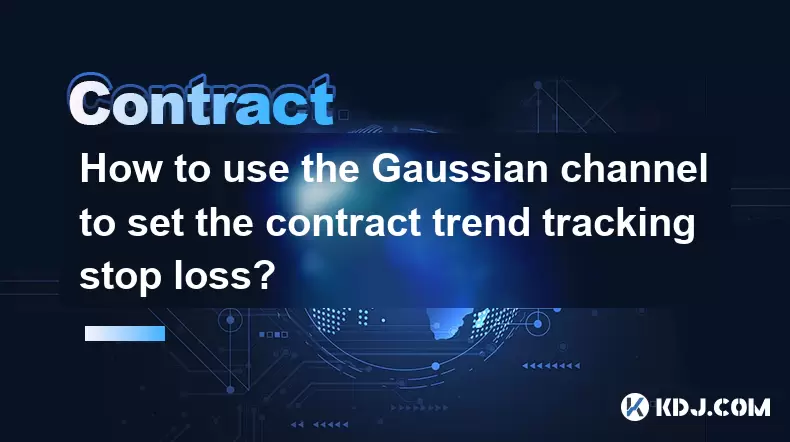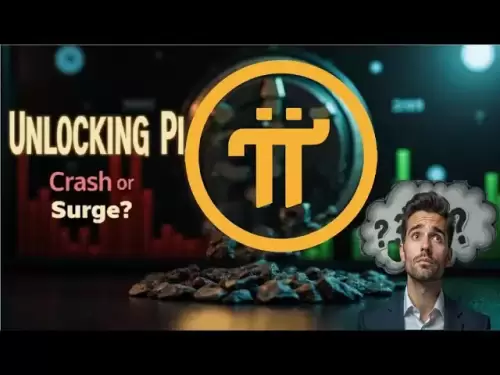-
 Bitcoin
Bitcoin $105,734.0170
-1.51% -
 Ethereum
Ethereum $2,414.7328
-3.26% -
 Tether USDt
Tether USDt $1.0002
0.00% -
 XRP
XRP $2.1748
-2.62% -
 BNB
BNB $647.5663
-1.72% -
 Solana
Solana $148.1710
-3.81% -
 USDC
USDC $0.9999
-0.01% -
 TRON
TRON $0.2799
-0.02% -
 Dogecoin
Dogecoin $0.1586
-4.17% -
 Cardano
Cardano $0.5440
-5.03% -
 Hyperliquid
Hyperliquid $37.0680
-6.59% -
 Bitcoin Cash
Bitcoin Cash $501.2052
-4.01% -
 Sui
Sui $2.6846
-3.47% -
 Chainlink
Chainlink $12.8488
-3.38% -
 UNUS SED LEO
UNUS SED LEO $8.9480
-1.51% -
 Avalanche
Avalanche $17.2059
-3.87% -
 Stellar
Stellar $0.2270
-4.75% -
 Toncoin
Toncoin $2.7889
-3.93% -
 Shiba Inu
Shiba Inu $0.0...01126
-1.76% -
 Litecoin
Litecoin $83.6893
-3.36% -
 Hedera
Hedera $0.1445
-4.49% -
 Monero
Monero $312.4014
-2.58% -
 Dai
Dai $1.0000
0.00% -
 Ethena USDe
Ethena USDe $1.0001
-0.01% -
 Polkadot
Polkadot $3.2920
-3.32% -
 Bitget Token
Bitget Token $4.4629
-1.81% -
 Uniswap
Uniswap $6.5386
-8.42% -
 Aave
Aave $260.3780
-6.01% -
 Pepe
Pepe $0.0...09308
-4.54% -
 Pi
Pi $0.4864
-3.04%
Introduction to CoinW contract trading
CoinW contract trading platform offers multiple trading pairs, advanced trading features, and tiered fee structure, making it suitable for both novice and seasoned traders in the realm of cryptocurrency trading.
Nov 20, 2024 at 05:04 am

Introduction to CoinW Contract Trading: A Comprehensive Guide for Beginners
In the realm of cryptocurrency trading, contract trading has emerged as a popular avenue for experienced traders seeking high-yield opportunities. CoinW, a reputable cryptocurrency exchange, offers a robust contract trading platform that caters to the needs of both novice and seasoned traders. This comprehensive guide will delve into the intricacies of CoinW contract trading, providing a step-by-step walkthrough for beginners aspiring to maximize their trading potential.
What is Contract Trading?
Contract trading involves speculating on the future price of crypto assets through derivative contracts. Traders can enter into long or short positions (buying or selling contracts) based on their market predictions. Instead of physically owning the underlying asset, contract traders aim to profit from price fluctuations.
Benefits of Contract Trading on CoinW
- Leverage Trading: CoinW contract trading offers leverage of up to 125x, enabling traders to amplify their returns. However, it's crucial to note that higher leverage also magnifies potential losses.
- Multiple Trading Pairs: CoinW offers an extensive range of trading pairs covering major cryptocurrencies, altcoins, and stablecoins, providing traders with ample diversification opportunities.
- Advanced Trading Features: CoinW empowers traders with advanced tools such as stop-loss orders, take-profit orders, and multiple order types, enhancing risk management and maximizing profit-taking strategies.
- Progressive Fee Structure: CoinW adopts a tiered fee structure based on trading volume, rewarding active traders with lower trading fees.
Step 1: Creating a CoinW Account
- Visit the official CoinW website and click on "Sign Up."
- Enter your email address and create a strong password.
- Complete the two-factor authentication (2FA) setup for enhanced account security.
Step 2: Funding Your Account
- Once your account is set up, navigate to the "Assets" section and select "Deposit."
- Choose your preferred crypto asset and follow the on-screen instructions to transfer funds to your CoinW account.
- Alternatively, you can purchase cryptocurrency directly from CoinW using a credit card or debit card.
Step 3: Accessing the Contract Trading Platform
- Log in to your CoinW account and click on the "Contracts" tab from the top menu.
- Select the trading pair you wish to trade, such as BTC/USDT.
- The contract trading interface will appear, displaying the order book, price chart, and trading tools.
Step 4: Understanding Contract Specifications
Before placing a trade, it's essential to understand the contract specifications, including:
- Contract Value: The notional value of each contract (e.g., 1 BTC/USDT contract is equivalent to 1 BTC).
- Tick Value: The minimum price change that can occur in the contract.
- Leverage: The amount of leverage you can apply to your trades.
Step 5: Placing a Trade
- Determine your trading strategy and market analysis based on technical indicators or fundamental factors.
- Click on the "Buy" or "Sell" button to place a long or short position.
- Specify the contract quantity and leverage level (if desired).
- Confirm your order and submit it to the market.
Step 6: Monitoring and Managing Your Trade
- Once your trade is executed, it will appear in the "Positions" tab.
- Monitor the price movements and adjust your risk management parameters accordingly.
- Consider using stop-loss and take-profit orders to minimize losses and lock in profits.
- Close your position when you're satisfied with the outcome.
Step 7: Withdrawing Your Profits
- Once you close your trade with a positive return, the profit will be credited to your margin account.
- Navigate to the "Assets" section and select "Withdraw."
- Choose the cryptocurrency you wish to withdraw and enter the amount.
- Submit the withdrawal request and follow the on-screen instructions to complete the transaction.
Disclaimer:info@kdj.com
The information provided is not trading advice. kdj.com does not assume any responsibility for any investments made based on the information provided in this article. Cryptocurrencies are highly volatile and it is highly recommended that you invest with caution after thorough research!
If you believe that the content used on this website infringes your copyright, please contact us immediately (info@kdj.com) and we will delete it promptly.
- Bitget Wallet's Fomo Thursdays: Big Wins and a 20% Winners Rate!
- 2025-07-02 16:50:12
- MAGACOIN FINANCE: The Altcoin Presale Turning Heads in the Crypto Scene
- 2025-07-02 16:55:12
- XRP, Escrow, and Token Management: A Deep Dive into Ripple's Strategy
- 2025-07-02 17:10:14
- Neo Pepe Ignites Crypto Rally: Analyst Predictions & The Memetrix Revolution
- 2025-07-02 17:15:12
- Dogecoin, Price Prediction, and Retail FOMO: What's the Hype?
- 2025-07-02 17:20:12
- Toncoin's Tightrope Walk: Chart Analysis and Bounce Potential
- 2025-07-02 17:50:17
Related knowledge

How to use the price slope to filter the false breakthrough signal of the contract?
Jun 20,2025 at 06:56pm
Understanding the Concept of Price Slope in Contract TradingIn contract trading, especially within cryptocurrency derivatives markets, price slope refers to the rate at which the price changes over a specific time period. It helps traders assess the strength and sustainability of a trend. A steep slope may indicate strong momentum, while a shallow slope...

How to determine the expected volatility of the contract through the volatility cone?
Jun 19,2025 at 12:28pm
Understanding the Basics of Volatility in Cryptocurrency ContractsIn the realm of cryptocurrency trading, volatility is a key metric that traders use to assess potential risk and reward. When dealing with futures contracts, understanding how volatile an asset might become over time is crucial for position sizing, risk management, and strategy developmen...

How to formulate a contract intraday trading plan in combination with the pivot point system?
Jun 21,2025 at 03:42pm
Understanding the Basics of Pivot Points in Cryptocurrency TradingPivot points are technical analysis tools used by traders to identify potential support and resistance levels. These levels are calculated using the previous day's high, low, and closing prices. In the context of cryptocurrency trading, where markets operate 24/7, pivot points help trader...

How to adjust the contract position ratio through the price fluctuation entropy?
Jun 22,2025 at 11:42am
Understanding Price Fluctuation Entropy in Cryptocurrency ContractsIn the world of cryptocurrency futures trading, price fluctuation entropy is a relatively new concept used to measure market volatility and uncertainty. It derives from information theory, where entropy refers to the degree of randomness or unpredictability in a system. In crypto contrac...

How to use the volume swing indicator to predict the contract volume-price divergence?
Jun 18,2025 at 11:42pm
Understanding the Volume Swing IndicatorThe volume swing indicator is a technical analysis tool used primarily in cryptocurrency trading to evaluate changes in volume over time. Unlike price-based indicators, this metric focuses solely on trading volume, which can provide early signals about potential market reversals or continuations. The key idea behi...

How to use the Gaussian channel to set the contract trend tracking stop loss?
Jun 18,2025 at 09:21pm
Understanding the Gaussian Channel in Cryptocurrency TradingThe Gaussian channel is a technical indicator used primarily in financial markets, including cryptocurrency trading, to identify trends and potential reversal points. It is based on statistical principles derived from the normal distribution, commonly known as the Gaussian distribution or bell ...

How to use the price slope to filter the false breakthrough signal of the contract?
Jun 20,2025 at 06:56pm
Understanding the Concept of Price Slope in Contract TradingIn contract trading, especially within cryptocurrency derivatives markets, price slope refers to the rate at which the price changes over a specific time period. It helps traders assess the strength and sustainability of a trend. A steep slope may indicate strong momentum, while a shallow slope...

How to determine the expected volatility of the contract through the volatility cone?
Jun 19,2025 at 12:28pm
Understanding the Basics of Volatility in Cryptocurrency ContractsIn the realm of cryptocurrency trading, volatility is a key metric that traders use to assess potential risk and reward. When dealing with futures contracts, understanding how volatile an asset might become over time is crucial for position sizing, risk management, and strategy developmen...

How to formulate a contract intraday trading plan in combination with the pivot point system?
Jun 21,2025 at 03:42pm
Understanding the Basics of Pivot Points in Cryptocurrency TradingPivot points are technical analysis tools used by traders to identify potential support and resistance levels. These levels are calculated using the previous day's high, low, and closing prices. In the context of cryptocurrency trading, where markets operate 24/7, pivot points help trader...

How to adjust the contract position ratio through the price fluctuation entropy?
Jun 22,2025 at 11:42am
Understanding Price Fluctuation Entropy in Cryptocurrency ContractsIn the world of cryptocurrency futures trading, price fluctuation entropy is a relatively new concept used to measure market volatility and uncertainty. It derives from information theory, where entropy refers to the degree of randomness or unpredictability in a system. In crypto contrac...

How to use the volume swing indicator to predict the contract volume-price divergence?
Jun 18,2025 at 11:42pm
Understanding the Volume Swing IndicatorThe volume swing indicator is a technical analysis tool used primarily in cryptocurrency trading to evaluate changes in volume over time. Unlike price-based indicators, this metric focuses solely on trading volume, which can provide early signals about potential market reversals or continuations. The key idea behi...

How to use the Gaussian channel to set the contract trend tracking stop loss?
Jun 18,2025 at 09:21pm
Understanding the Gaussian Channel in Cryptocurrency TradingThe Gaussian channel is a technical indicator used primarily in financial markets, including cryptocurrency trading, to identify trends and potential reversal points. It is based on statistical principles derived from the normal distribution, commonly known as the Gaussian distribution or bell ...
See all articles

























































































